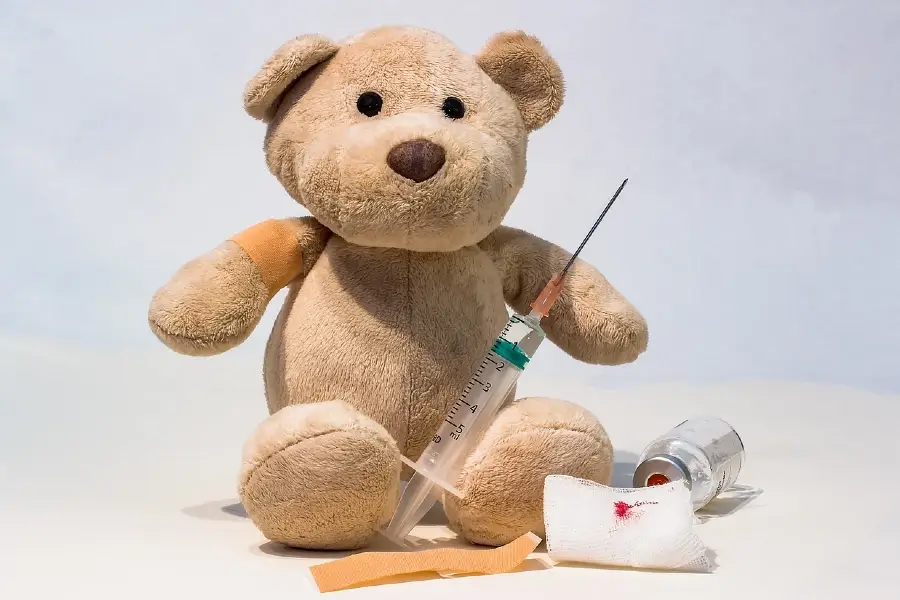Koplik’s spots, often referred to as Koplik’s sign, are little white lesions with a bluish-white center that occur on the buccal mucosa, the inner lining of the cheeks, during the prodromal phase of measles, the early stage of the disease. However, although they are considered diagnostic symptoms of measles, not all people with measles will develop them.
Aspects of appearance:
Typically measuring between one and two millimeters in diameter, Koplik’s dots are extremely minute in size.
Location: They are found on the buccal mucosa, directly across from the upper first and second molars.
Characteristics of Color and Texture: These minuscule specks’ backgrounds are white or grayish-white, and the centers are a distinct bluish-white color. When touched with a cotton swab, they have a distinct and abrasive roughness.
The Importance of:
Early Sign: Koplik’s spots often present one to two days before the measles rash appears, making them an important early diagnostic indicator of measles infection.
Even though Koplik’s spots are a distinctive symptom of measles, they do not show in every instance of the disease. It is possible that some people who have measles will not suffer from them.
An Examination of Other Types of Mouth Ulcers:
Unlike other types of mouth ulcers, such as canker sores, which are often larger, more painful, and found in different locations of the mouth, Koplik’s spots are smaller and less painful. It is essential to differentiate between these two types of mouth ulcers.
The diagnosis of measles may be confirmed through confirmation tests.
A diagnosis of measles is:
A mix of criteria, such as symptoms (fever, cough, runny nose), the presence of Koplik’s spots, and the outward manifestation of the measles rash, are taken into consideration by medical professionals when making a diagnosis of measles.
The diagnosis of measles may be confirmed through confirmation tests, which may include viral cultures or blood testing in certain instances.
The Importance of Prevent:
Measles is an extremely contagious illness. To prevent measles infection, vaccination is the most effective method now available. When it comes to defending against measles, the measles, mumps, and rubella (MMR) vaccine is safe and extremely successful. Measles can cause significant problems, including pneumonia, encephalitis (swelling of the brain), and even death. Measles is a viral disease that is highly contagious and can lead to serious complications.
The MMR vaccine stimulates the immune system, causing the body to develop antibodies that recognize and combat the measles virus. This provides protection against the disease for an extended period of time.
Numerous scientific investigations and clinical trials have been conducted to demonstrate that the MMR vaccine is both safe and effective. This finding has been substantiated by significant research. The vaccination has been in use for several decades and has a well-established track record of safety. The only side effects that have been reported are extremely uncommon and modest, such as a moderate rash or a fever.
The measles, mumps, and rubella (MMR) vaccine is a safe, effective, and vital.
Contrarily, the risks that are linked with catching measles, such as the possibility of experiencing severe complications and even death, are significantly greater than the dangers that are associated with receiving the vaccination.
Not only is vaccination essential for protecting individuals, but it is also essential for preserving herd immunity among a whole society. When a significant section of the population is immunized, those who are unable to receive vaccinations, such as babies, immunocompromised individuals, and those with medical contraindications, are effectively protected from the measles virus. This makes it more difficult for the virus to spread.
When people decide to get vaccinated, they not only safeguard themselves but also contribute to the overall health and well-being of their community and to public health.
The measles, mumps, and rubella (MMR) vaccine is a safe, effective, and vital tool in the fight against measles.
Getting vaccinated is a responsible and proactive measure that individuals can take to protect themselves and their loved ones and contribute to the larger public health efforts to eradicate this terrible disease that can be prevented.
Additional information can be obtained from the following sources:
Centers for Disease Control and Prevention: https://www.cdc.gov/measles/about/index.html
Mayo Clinic: https://www.mayoclinic.org/diseases-conditions/measles/symptoms-causes/syc-20374857

